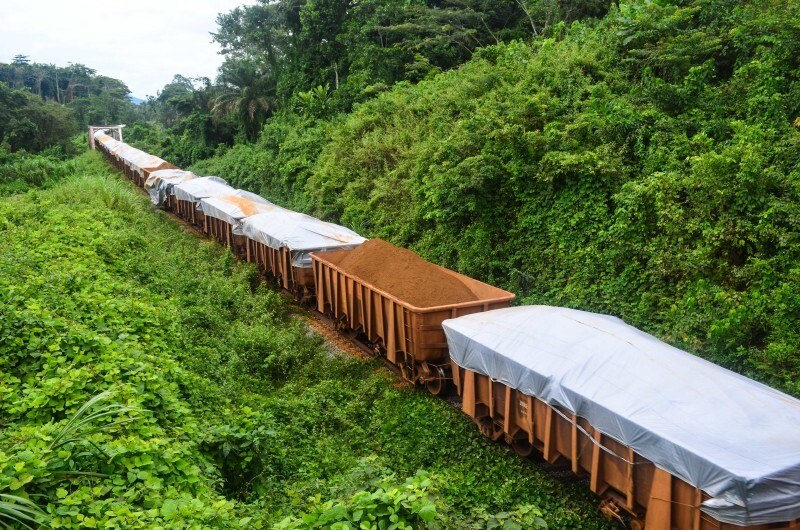Guinean Forests of West Africa - Threats

Many of the threats to biodiversity in the Guinean Forests are linked, either directly or indirectly, to a high incidence of poverty, political instability, unsustainable practices and/or civil conflict. They include:
Agriculture
Agriculture in the hotspot takes many different forms, ranging from traditional low intensity cropping, shifting, small-scale subsistence agriculture, and grazing systems to the cultivation and planting of cash crops for both urban and export markets at industrial scale. The main agricultural products grown for export are cacao, oil palm and rubber.
Many terrestrial Key Biodiversity Areas are threatened by the demand for new agricultural land due to the expanding human population. Expansion of subsistence agriculture is a particular threat in areas with fertile volcanic soils and a rapidly growing human population, for example within the Mount Cameroon and Bioko Montane Forests ecoregion. Lowland wetland ecosystems are particularly vulnerable to drainage and conversion for agriculture, threatening the high diversity of aquatic plants, for example in the lower Niger Delta.
Bushmeat hunting and wildlife trade
Hunting, gathering, harvest of timber and non-timber products, and exploitation of marine and freshwater organisms. Hunting traditions are strong in the hotspot countries, and for rural communities, bushmeat consumption has historically represented a significant source of protein. However, unsustainable hunting is a threat to biodiversity, and to people whose livelihoods depend on the trade. The productivity of forest systems, in terms of their ability to support high densities of large mammals, is much lower than savanna systems in Africa. It is, therefore, fairly easy to over hunt and effectively remove large-bodied mammals from the forest systems of the hotspot.
The links between bushmeat hunting and human health received increased attention because of the West African Ebola epidemic (2013-2016) and the global Covid-19 Pandemic (2020-2022). In response to the Ebola epidemic, some governments in the hotspot banned hunting and consumption of meat from wild animals, however there is evidence that this did not change consumption but instead drove hunting and distribution networks underground.
Logging
Threats to biodiversity posed by logging in the hotspot vary significantly among countries and according to the type of logging being undertaken. Commercial logging can be well-managed and may itself cause only modest negative impacts on biodiversity, or indeed these impacts may be positive. However, secondary effects can be devastating for biodiversity – they include hunting to feed the workforce, and opening of logging roads, which offers easy pathways into remote forest areas for hunters, farmers and settlers for several years after operations cease. Logging companies who practice reduced-impact logging are rare.
Overfishing
Artisanal and industrial fisheries in the hotspot are poorly regulated. Few catch data are recorded and most fishing takes place relatively close to shore. Near-shore trawling and methods such as blast fishing and poison are very damaging to species and habitats, as are use of beach and purse seines to target spawning areas and juveniles in coastal habitats.
Industrial fishing in the hotspot is highly globalized, with foreign and national fleets operating throughout the hotspot.
Oil and gas extraction
Poorly managed oil extraction in the hotspot has led to pollution and habitat destruction, with impacts on biodiversity as well as with socio-economic and political consequences.
Nigeria is by far the largest producer of oil in Africa, producing about 1.3 million barrels per day in mid-2024The social and environmental impacts of oil production in the delta region are already significant, and they constitute a serious threat to the unique and fragile biodiversity of the area, which includes many species of endemic and threatened freshwater fish, mollusks and large numbers of migratory shorebirds.
Fuelwood and charcoal production
Throughout the hotspot, there exist high levels of dependence on fuelwood. Local community forest use, including for fuelwood and charcoal production, can be managed sustainably in areas where population density is low and forests are not degraded. Yet, across the hotspot, exploitation is increasingly being carried out for trade as well as for household consumption, and the cumulative impact of numerous small-scale producers can be very significant.
Mining
Many parts of the hotspot are rich in gold and other valuable minerals, and their exploitation (especially surface mining) can cause direct loss of forest and other habitats, when mineral rich area coincide with areas rich in biodiversity. other habitats, particularly when mineral rich area coincide with areas rich in biodiversity. Impacts on communities can also be substantial, although industrial mining may result in the development of infrastructure and facilities in remote regions. Liberia and Sierra Leone are particularly rich in diamonds, while Ghana is noted for its gold reserves. In addition to the direct impacts of mining, damage to KBAs is associated with pollution of soil and water from tailings and dumping of chemicals, especially mercury.
Climate Change
The impacts of climate change are complex and difficult to separate from the impacts of other causes of forest loss and degradation. As a result, they are rarely reported as distinct threats. Impacts that are typically associated with climate change, such as coastal erosion, drought and extreme weather.
Agricultural run-off, poisoning and industrial pollution
Although the oil industry has been singled out as a major polluter in the hotspot, improper domestic and industrial waste disposal is also a significant threat.
Agricultural run-off is from the use of agro-chemicals for horticulture, rubber, oil palm and other plantations. Soil erosion, linked to deforestation in catchments for agriculture, leads to greater sediment loads in rivers and lake systems, with subsequent impacts on freshwater species and habitats. It is a particular problem for the Cameroon crater lakes.
Read more about these and other threats in chapter eight of our ecosystem profile (PDF - 5.4MB).